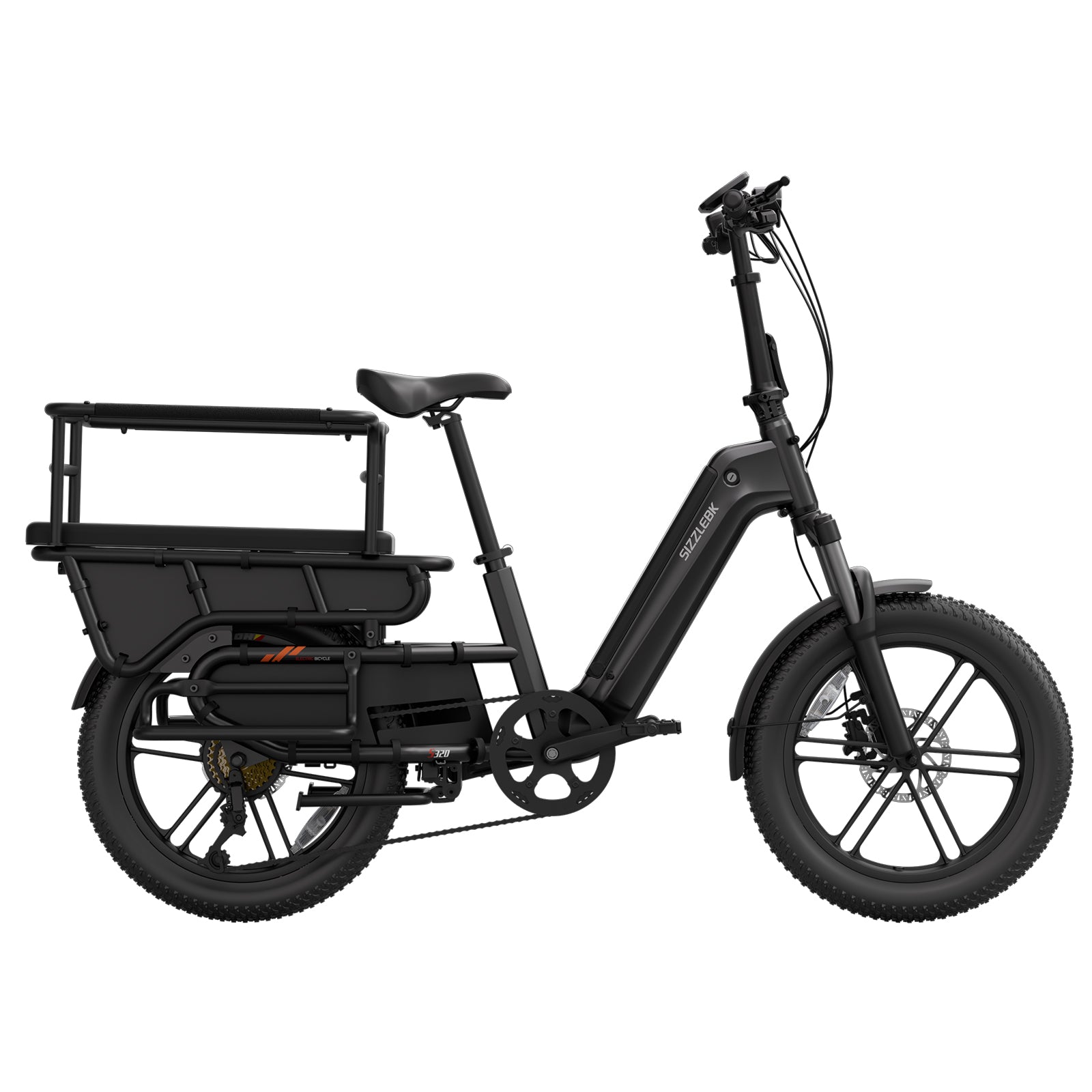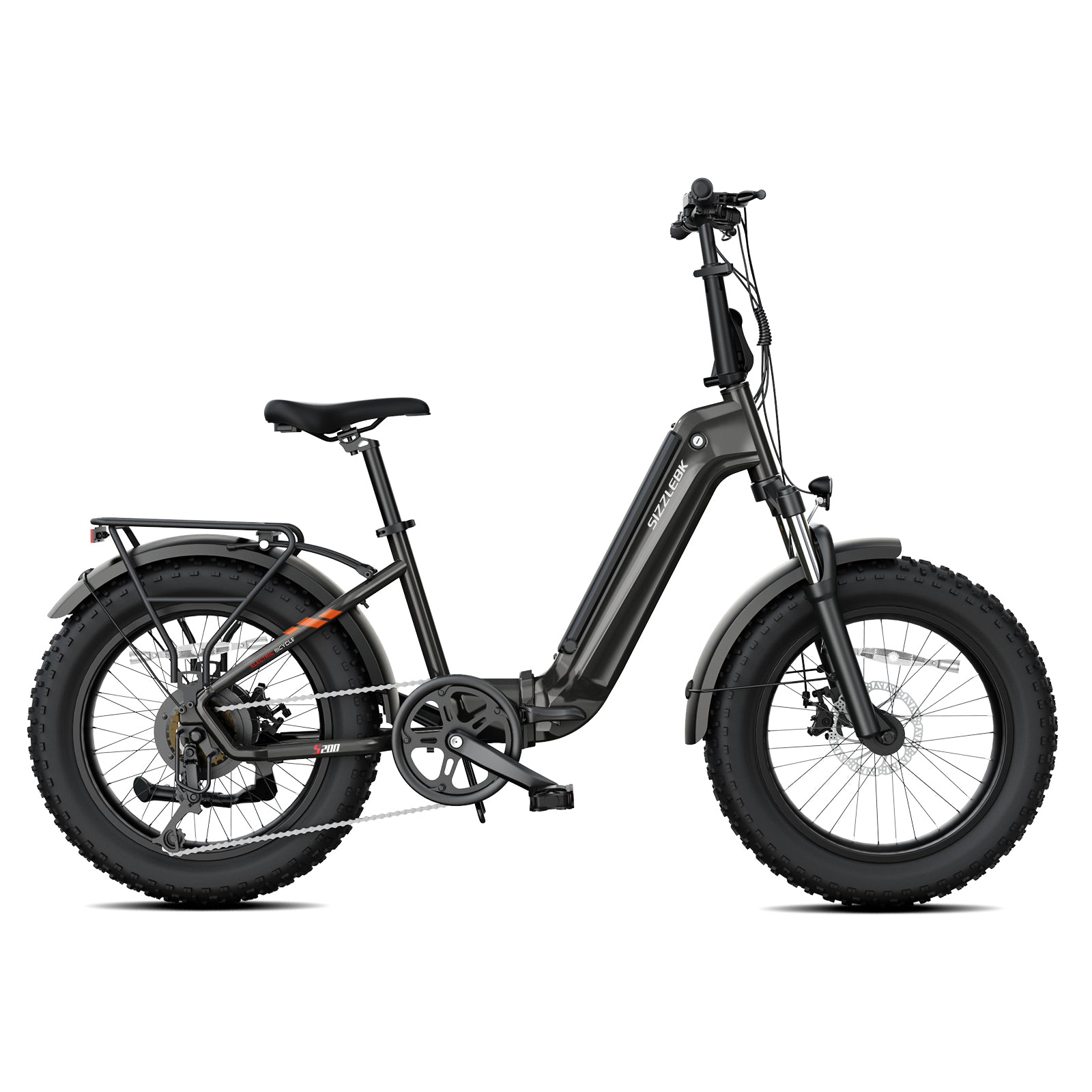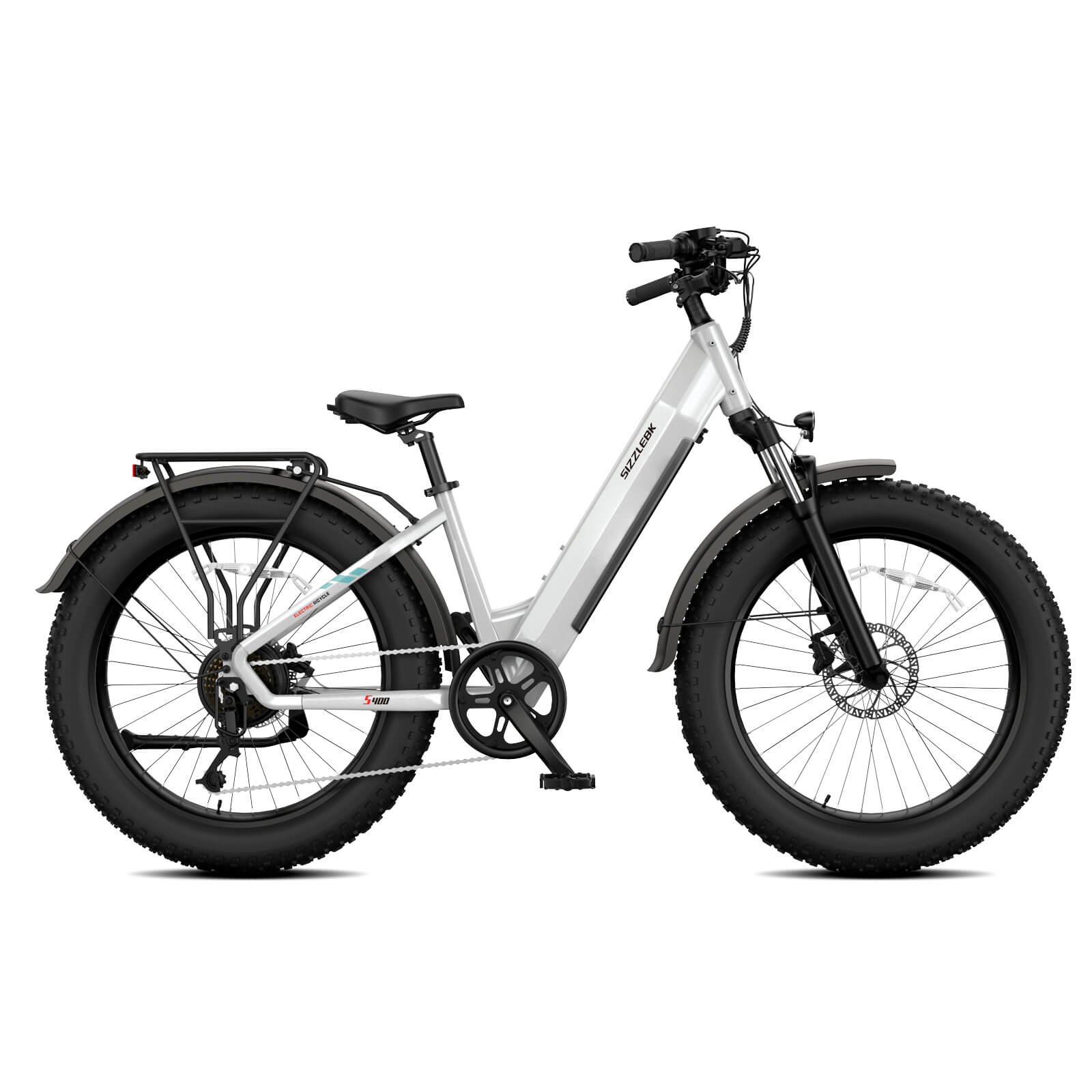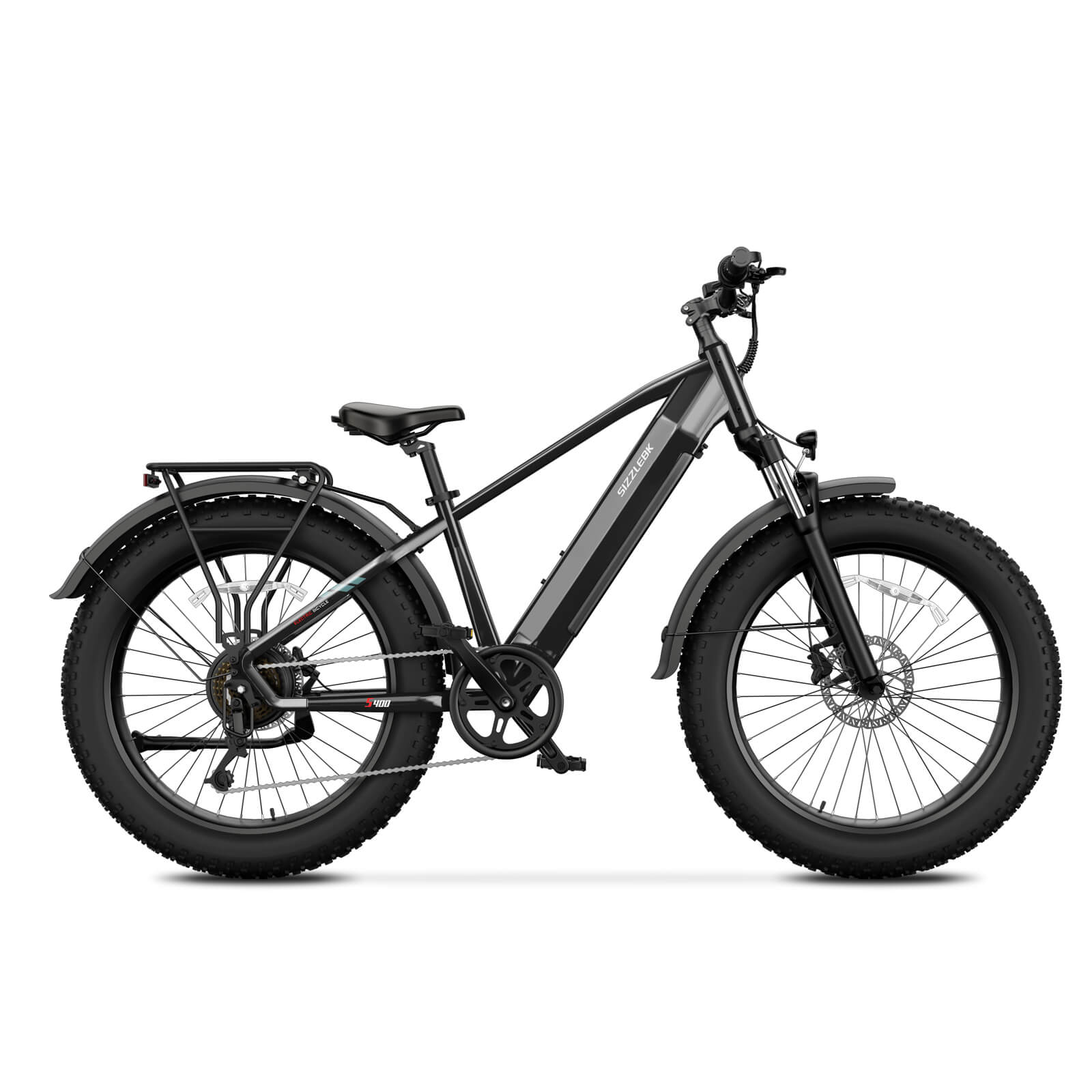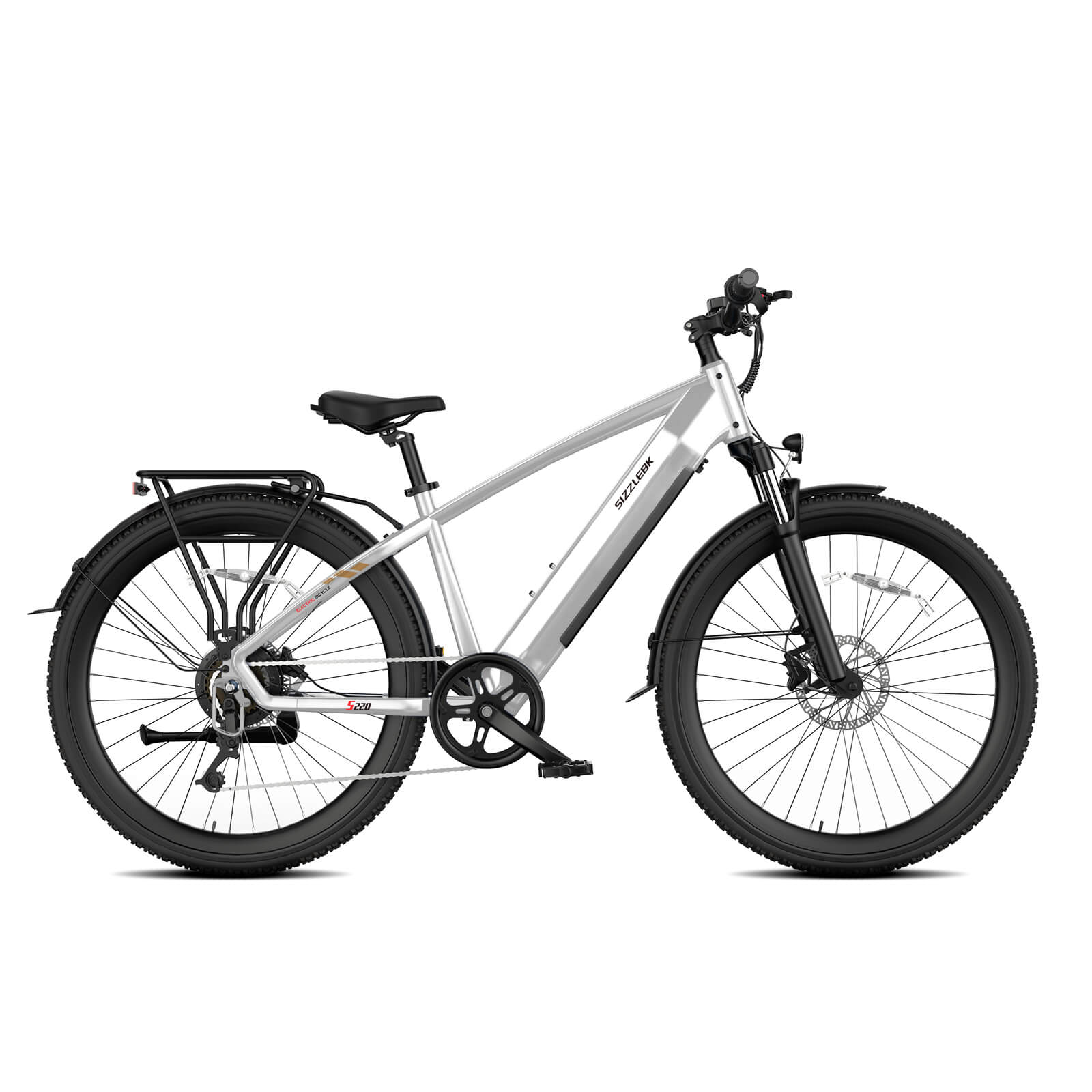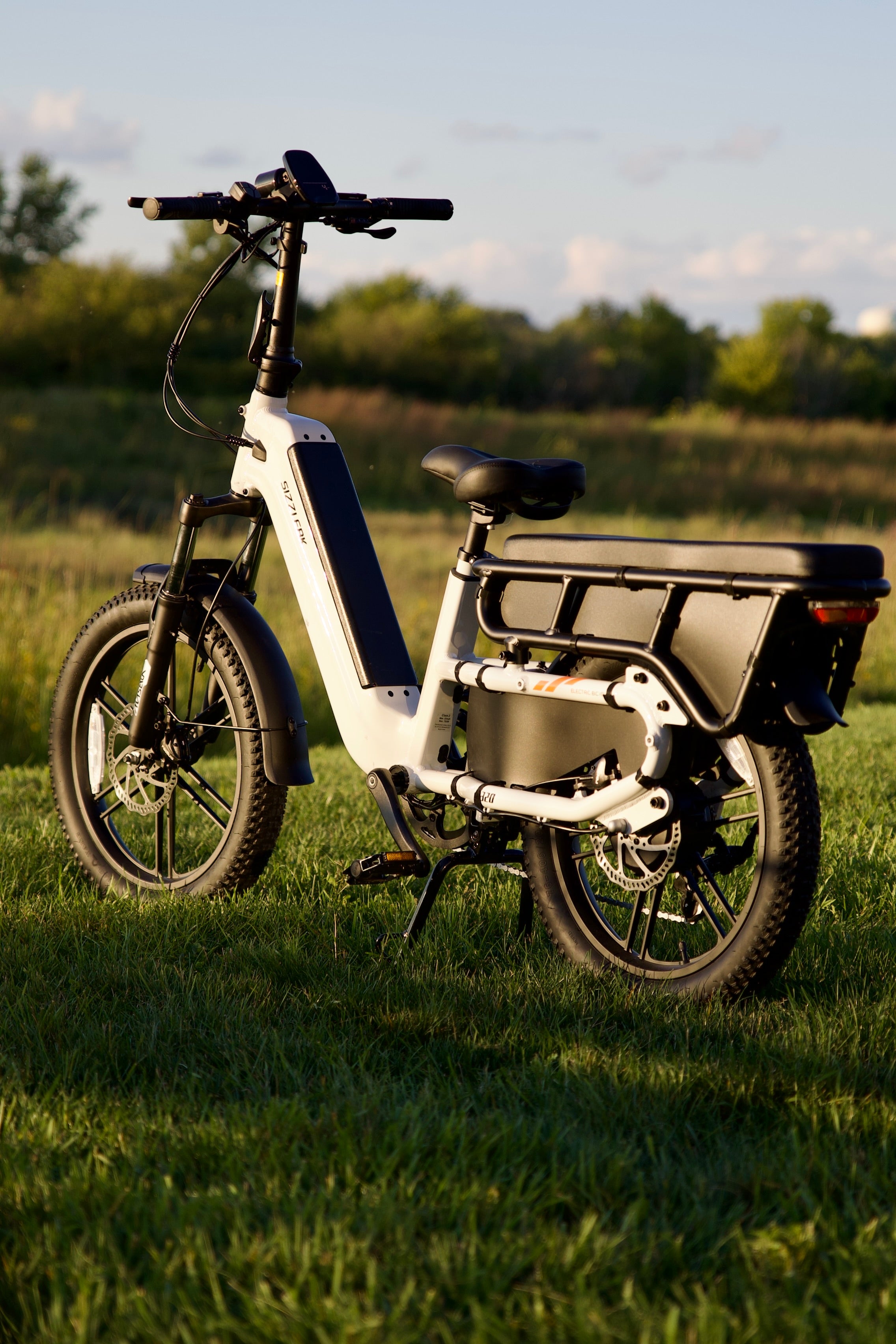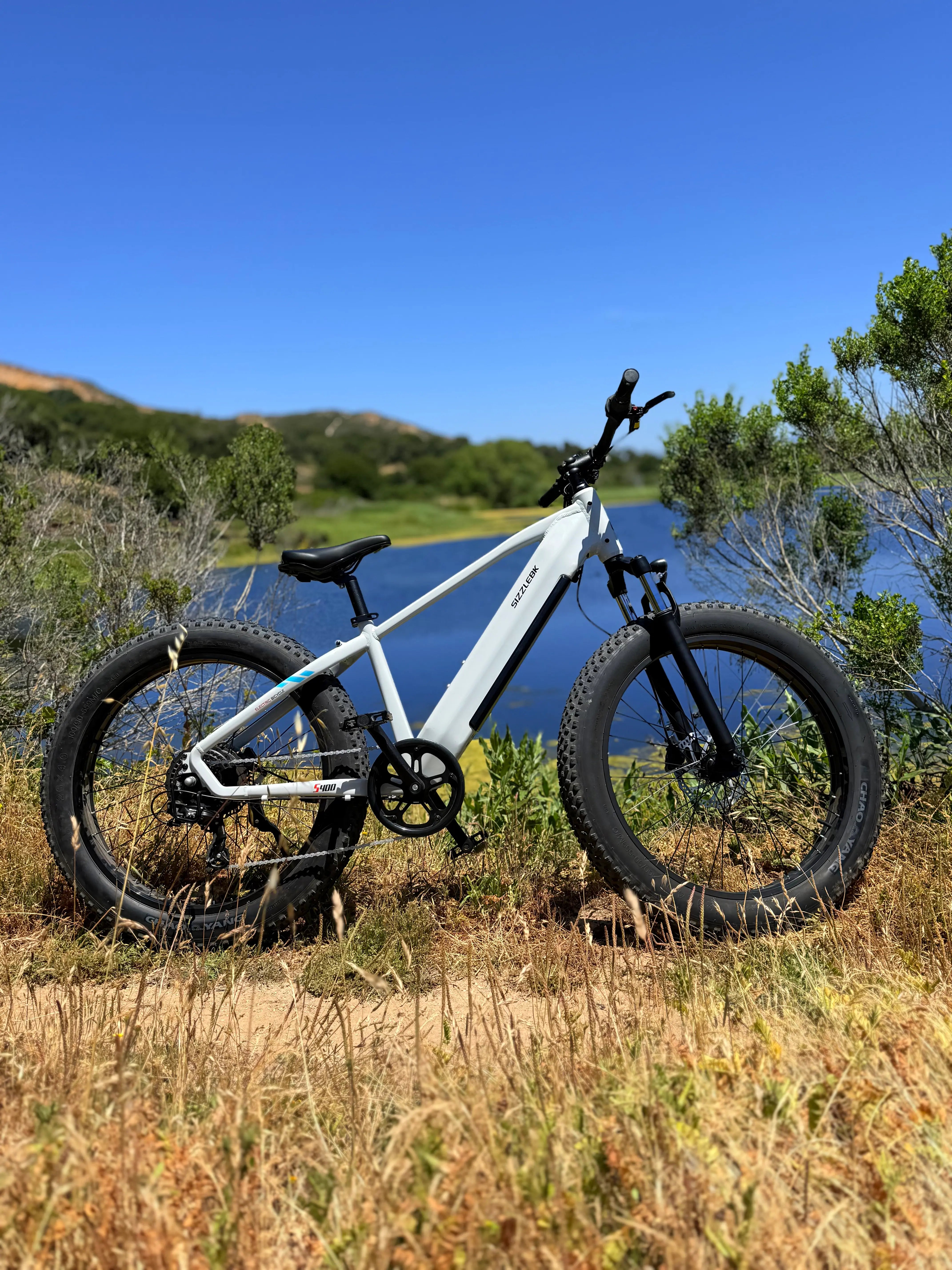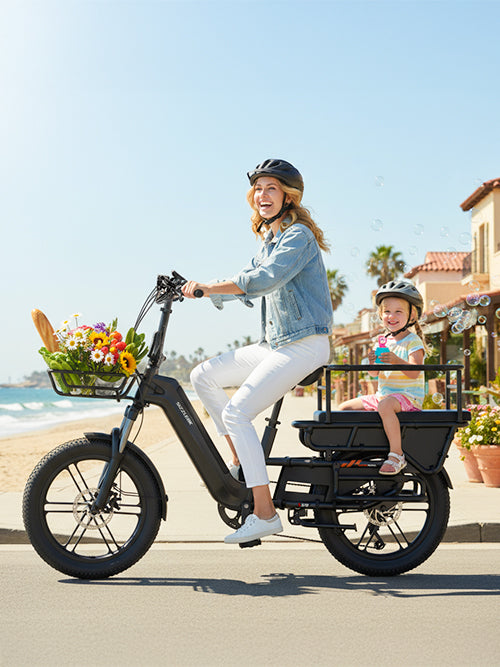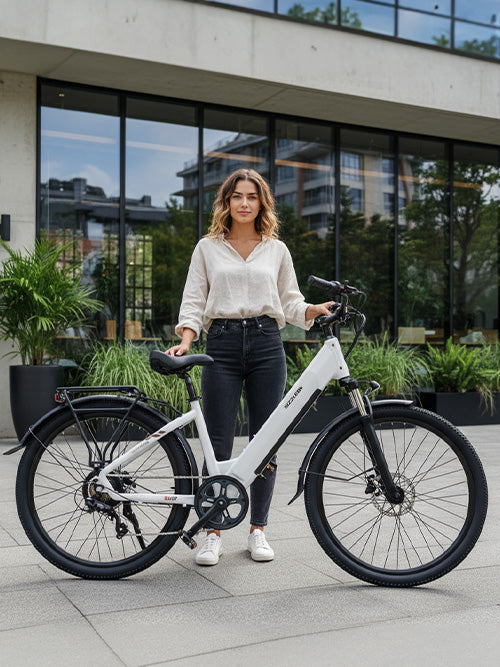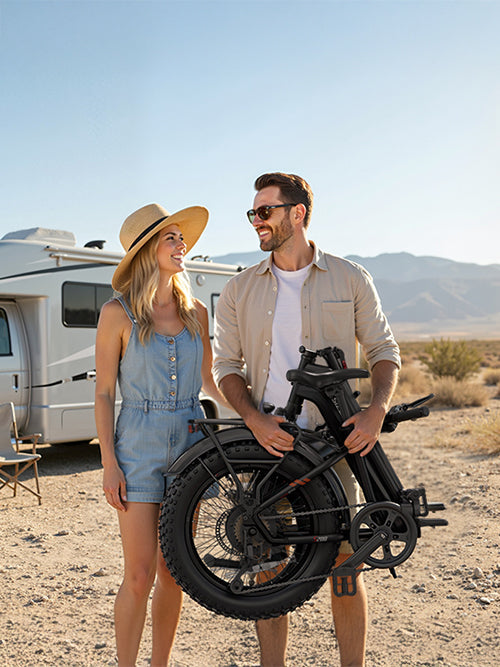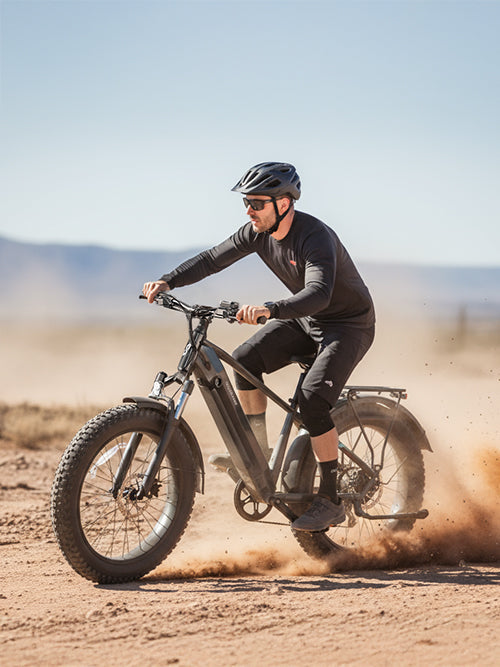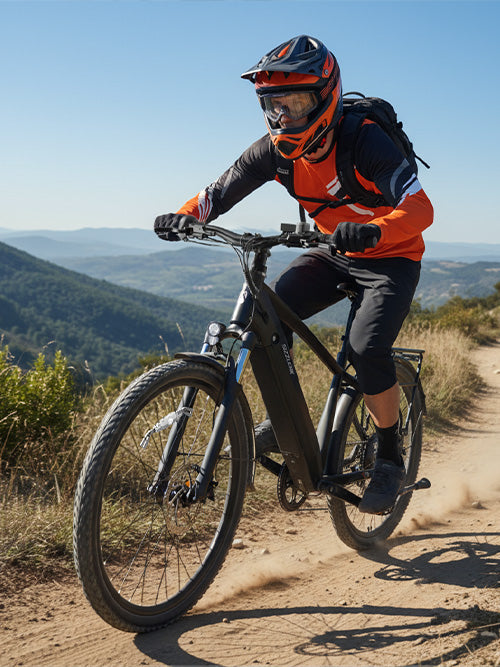Why Fat Tire E-Bikes Are Gaining Attention
In the last decade, electric bikes have moved from niche to mainstream across the United States. While many riders embrace slim commuter e-bikes for city travel, there’s a growing demand for something more versatile and powerful: the fat tire electric bike.
With oversized tires, enhanced stability, and electric assistance, these bikes excel in environments where traditional bikes struggle — think sandy beaches, snowy trails, or rocky mountain paths. As outdoor recreation and micro-mobility trends expand, many riders are searching for the best fat tire electric bike to fit their lifestyle.
What Is a Fat Tire Electric Bike?
A fat tire e-bike is characterized by oversized tires, typically 3.8 inches to 5 inches wide. These tires provide increased traction and stability, allowing riders to conquer terrains that would be difficult on standard bikes.
Key Features of Fat Tire E-Bikes:
Wide Tires: Excellent grip on sand, snow, gravel, and mud.
Electric Motor: Ranges from 500W to 1000W, offering throttle and pedal-assist modes.
Comfort-Oriented Design: Suspension forks, padded saddles, and upright handlebars for smoother rides.
Versatility: Suitable for off-road adventures, daily commuting, and recreational riding.
Whether you’re an adventurer exploring backcountry trails or a commuter navigating rough urban streets, a fat tire electric bike can be the perfect all-rounder.
Why Choose a Fat Tire E-Bike?
All-Terrain Capability
A fat tire electric bike for off-road riding provides unmatched traction on loose or uneven surfaces. Riders can easily transition from city pavement to forest trails or sandy beaches without changing bikes.
Year-Round Riding
Unlike slim commuter e-bikes, fat tire models perform well in winter. Wide tires cut through snow and slush, while electric motors reduce the strain of pedaling in harsh conditions.
Stability and Confidence
Wider contact patches increase balance and make learning easier for new riders. Even at slower speeds, fat tire bikes feel steady and forgiving.
Comfort on Rough Surfaces
Fat tires absorb shocks from potholes, gravel, and curbs, delivering a smooth ride on both paved and unpaved routes. This makes them appealing as fat tire commuter e-bikes in cities with uneven roads.
Versatility
One bike, many uses: commuting, mountain biking, beach cruising, or weekend adventures. Riders no longer need separate bikes for different terrains.
The Growing Popularity of Fat Tire Electric Bikes in the U.S.
Several cultural and economic factors are driving the surge in fat tire e-bike sales:
Outdoor Adventure Boom: Post-2020, outdoor recreation soared as Americans sought socially distanced activities.
Economic Value: Many families use fat tire e-bikes as car replacements, especially in two-car households.
E-Bike Rebates: U.S. states and cities, such as California and Denver, offer rebates that cover fat tire models.
Influencer Culture: Social media showcases fat tire bikes on trails, beaches, and city streets, fueling demand.
Spotlight on Sizzlebk: A Reliable Fat Tire E-Bike Brand
When it comes to finding the best fat tire electric bike, one standout option is Sizzlebk, a U.S.-focused brand designing e-bikes for comfort and performance.
Motor: 750W hub motor with peak output near 1300W, tackling steep hills and off-road terrain.
Battery: 48V 15Ah battery delivering up to 65 miles on a single charge.
Tires: 26x4-inch fat tires for superior grip on sand, snow, and gravel.
Frame: Step-through or traditional frame options to suit different riders.
Features: Hydraulic disc brakes, integrated LED lighting, and a rear rack for cargo.
Sizzlebk combines affordability, durability, and style, making it a solid choice for those looking to buy a fat tire commuter e-bike or weekend adventure bike.
Who Should Consider a Fat Tire Electric Bike?
Adventure Seekers
From mountain trails to beach rides, a fat tire e-bike for off-road adventures offers unmatched freedom.
Winter Riders
For commuters in snowy cities like Minneapolis or Denver, fat tire e-bikes provide stability and year-round usability.
Urban Riders
Even in cities, fat tire commuter e-bikes help navigate potholes, uneven streets, and curbs without discomfort.
Families
Parents who carry kids or cargo benefit from the extra stability and load capacity of wider tires.
Best Fat Tire Electric Bike Features to Look For
Motor Power
500W motors are sufficient for flat terrain and city riding.
750W–1000W motors are recommended for hills, trails, and heavy cargo.
Battery Range
Short commutes: 30–40 miles per charge.
Long adventures: 60–80 miles with larger batteries.
Frame Design
Step-through frames for accessibility and ease of mounting.
Traditional frames for aggressive trail riding.
Suspension
Front suspension forks and wide tires together deliver a smooth ride, even on rocky or uneven paths.
Accessories
Integrated racks, fenders, and lights enhance practicality for commuters and adventurers alike.
Fat Tire E-Bike vs. Traditional E-Bike
|
Feature |
Fat Tire Electric Bike |
Standard Electric Bike |
|
Tires |
3.8"–5" wide |
1.5"–2.5" wide |
|
Terrain |
Sand, snow, gravel, trails |
Paved roads, bike lanes |
|
Stability |
High, even at low speed |
Moderate |
|
Comfort |
Excellent shock absorption |
Limited |
|
Versatility |
All-terrain use |
Mostly urban commuting |
Case Studies: Real Riders, Real Benefits
Off-Road Enthusiasts
A Colorado mountain biker switched to a fat tire electric bike for trail riding, reporting improved stamina and longer adventures without fatigue.
Winter Commuter in Minnesota
A daily commuter replaced their car with a fat tire commuter e-bike, saving $3,000 annually on fuel and parking while riding confidently through snow.
Family Rider in California
A parent used a fat tire cargo e-bike to handle school drop-offs and grocery runs, replacing most short car trips.
Challenges of Fat Tire Electric Bikes
Despite their advantages, fat tire e-bikes have some considerations:
Weight: Heavier frames and batteries make them less portable.
Price: High-quality models range between $1,800–$3,500.
Speed on Pavement: Wider tires increase rolling resistance, slightly reducing top speeds compared to slimmer e-bikes.
Storage: Fat tire bikes require more space, making them less ideal for small apartments.
Still, for many riders, the benefits outweigh the drawbacks.
FAQs About Fat Tire Electric Bikes
Q: What is the best fat tire electric bike for beginners?
A: Look for models with a 500–750W motor, step-through frame, and a 40–50 mile range.
Q: Can fat tire e-bikes be used for commuting?
A: Yes, fat tire commuter e-bikes handle potholes, curbs, and weather conditions better than slim-tire models.
Q: Are fat tire e-bikes good for snow?
A: Absolutely. Wide tires provide grip and stability in snow and slush, making them ideal for winter commuting.
Q: How much do fat tire e-bikes cost?
A: Expect $1,500–$3,500 for quality models, though rebates can reduce the price.
Conclusion: Finding the Best Fat Tire Electric Bike
Fat tire e-bikes are more than just a trend — they’re a revolution in cycling. Offering stability, comfort, and all-terrain performance, they fit the needs of adventurers, commuters, and families alike.
If you’re searching for the best fat tire electric bike, consider your terrain, motor power, and range needs. Brands like Sizzlebk provide reliable, affordable, and versatile options tailored for U.S. riders.
Whether you’re riding on snowy streets, sandy beaches, or rugged trails, a fat tire e-bike delivers the power and confidence you need to ride anywhere.
